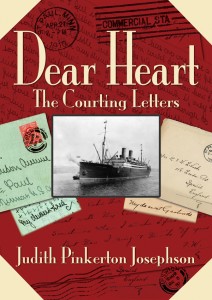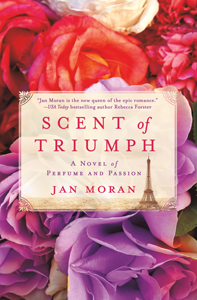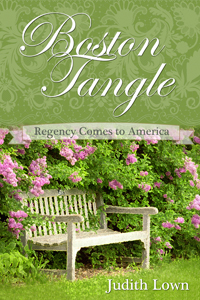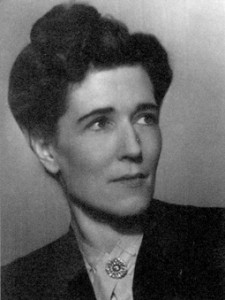 Judith Pinkerton Josephson loves to dig into the past. She believes that behind every person, every relationship, there lies a story. Today she tells the story behind the story of her latest historical fiction novel, Dear Heart: The Courting Letters. Her award-winning biographies, history books, and picture books include fiction and nonfiction for children. She has also written for adults.
Judith Pinkerton Josephson loves to dig into the past. She believes that behind every person, every relationship, there lies a story. Today she tells the story behind the story of her latest historical fiction novel, Dear Heart: The Courting Letters. Her award-winning biographies, history books, and picture books include fiction and nonfiction for children. She has also written for adults.
Dear Heart: The Courting Letters
 A trip to my mailbox these days might yield bills, ads, and the usual collection of junk mail. The sight of a handwritten letter nestled in the pile delights me. It was not always so. More than a century ago, letters and illustrated postcards were the main ways people communicated, be they friends, relations, or lovers. Phones were an expensive luxury.
A trip to my mailbox these days might yield bills, ads, and the usual collection of junk mail. The sight of a handwritten letter nestled in the pile delights me. It was not always so. More than a century ago, letters and illustrated postcards were the main ways people communicated, be they friends, relations, or lovers. Phones were an expensive luxury.
Almost twenty years ago, when I discovered an antique writing box filled with courting letters from 1909-1910, even a cursory reading had me hooked. Here were two people, Gertie and Fred, courting (a.k.a. dating, getting to know one another) via the written word and little packages they sent to each other. Separated between Ipswich, England, and St. Paul, Minnesota, a letter took ten days one way by train and ship. No instant communication was possible! The letter sent was usually not the one answered. I knew there was a story here, and it never let me alone.
I began by transcribing the letters. Fred wrote sixteen-page letters single-spaced. Gertie’s handwriting was creative, often spilling over onto play programs and church bulletins.
At my daughter Kirsten’s suggestion, I interwove a fictional modern couple’s story to add contrast. I chose 2010 in Chicago and Spain as the setting. Some elements—emotions, needs, hurdles, obstacles—are universal. But most young people in love today don’t write letters. Multiple other vehicles for communication exist. The restraints that existed in 1910 have softened, but not disappeared entirely.
My research entailed digging deeper into the historical events mentioned in the letters and in the two eras.
I purposely highlighted the contrasts between the two stories—modes of communication, technology, transportation, dissemination of information, fashions, speech. One of the most interesting contrasts involved women’s rights and freedoms.
My modern heroine, Lisa, despite her troubles in the dating world, has the freedom make choices, to be an independent woman. My 1909-10 heroine, Gertie, though she admires the suffragettes, hesitates to tell Fred her true feelings; people criticize her for refusing to marry someone else she doesn’t love.
A peek at Lisa: “With the click of computer keys, the Internet made it possible to communicate with more than one person at a time. Lisa crawled into bed and clicked off the lamp. I’m just one small soup can on a grocery soup aisle filled with an array of brands. Why pick me?”
A peek at Gertie: “Men had the best of it. Women, relegated to loving someone, but not showing it, must wait to put their true feelings into words until asked to be someone’s wife.” At another point, Mr. Jones, who rents a room from Gertie and fancies her, is off to a men’s-only meeting at church. Gertie writes, “How I wish I were a man.”
My vision for this book included illustrations. So I enlisted my artistically/graphically talented daughter Kirsten to turn photos, paintings, postcards, luggage tags, and letters into 27 vivid chapter openers and 17 interior illustrations.
Writer Wallace Stegner once said, “Any life will provide the material for writing, if it is attended to.”
So in Dear Heart: The Courting Letters, I attended to the lives of these two real people and invented two other fictional ones. Of the twenty-two books I’ve written, this one is close to my heart.
I hope readers will become as fascinated with history as I am and be inspired to listen to their hearts and persevere despite obstacles.
Persistence is the key to writing success. If an idea won’t let you alone, then follow it. Learn about the craft, research, revise, and read. Above all, write what you love!
Dear Heart is available on Amazon, Barnes & Nobel, and bookstores.
Visit Judith at www.judithjosephson.com, and follow her on Facebook, Twitter, Instagram, YouTube, and Pinterest.


 In her newest title, Boston Tangle: Regency Comes to America, Lown transports three of her English characters from previous books to Boston where they interact with the upper class and, of course, there is a love story—a tangled tale. Lown’s heroine Drusilla Fortesque is a lady who knows her own mind and Lown laces her writing with wry wit and avoids sappiness. Heyer would be proud.
In her newest title, Boston Tangle: Regency Comes to America, Lown transports three of her English characters from previous books to Boston where they interact with the upper class and, of course, there is a love story—a tangled tale. Lown’s heroine Drusilla Fortesque is a lady who knows her own mind and Lown laces her writing with wry wit and avoids sappiness. Heyer would be proud. Judith Lown is the author of A Match for Lady Constance (Avalon) and A Sensible Lady: A Traditional Regency Romance (eFrog Press). She is hard at work on a sequel but still makes time to blog. Today she pays tribute to Georgette Heyer during the week of her birthday. Note that
Judith Lown is the author of A Match for Lady Constance (Avalon) and A Sensible Lady: A Traditional Regency Romance (eFrog Press). She is hard at work on a sequel but still makes time to blog. Today she pays tribute to Georgette Heyer during the week of her birthday. Note that  Georgette Heyer might not have been the first writer to use Incomparable to designate a lady whose beauty is sufficiently compelling to thaw the hearts of icy Lords, turn erstwhile warriors into babysitters, or, most importantly, transform notorious rakes into faithful, monogamous husbands. However, she can be credited with establishing the Incomparable as a fixture of the Regency Romance, just as she established the Regency as a staple among romance novels.
Georgette Heyer might not have been the first writer to use Incomparable to designate a lady whose beauty is sufficiently compelling to thaw the hearts of icy Lords, turn erstwhile warriors into babysitters, or, most importantly, transform notorious rakes into faithful, monogamous husbands. However, she can be credited with establishing the Incomparable as a fixture of the Regency Romance, just as she established the Regency as a staple among romance novels. Judith Lown is the author of A Match for Lady Constance (Avalon) and A Sensible Lady: A Traditional Regency Romance (eFrog Press). She is hard at work on a sequel but still makes time to blog.
Judith Lown is the author of A Match for Lady Constance (Avalon) and A Sensible Lady: A Traditional Regency Romance (eFrog Press). She is hard at work on a sequel but still makes time to blog.